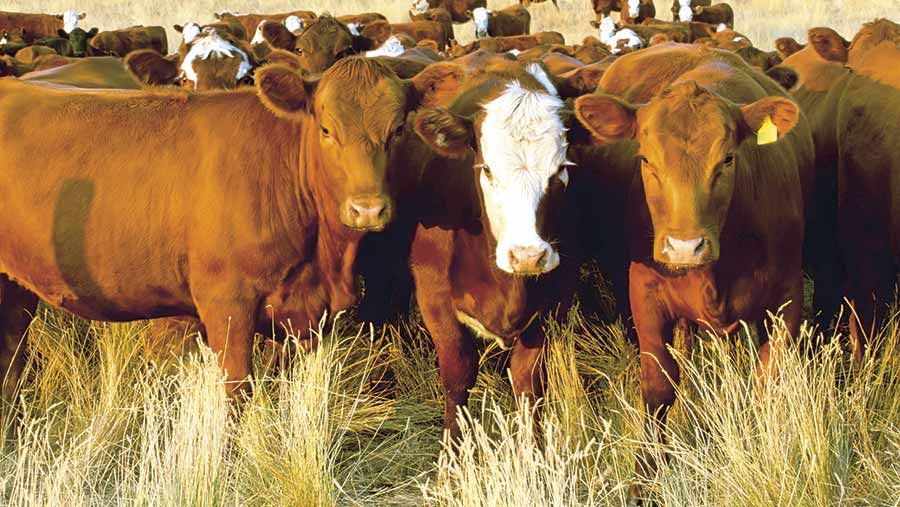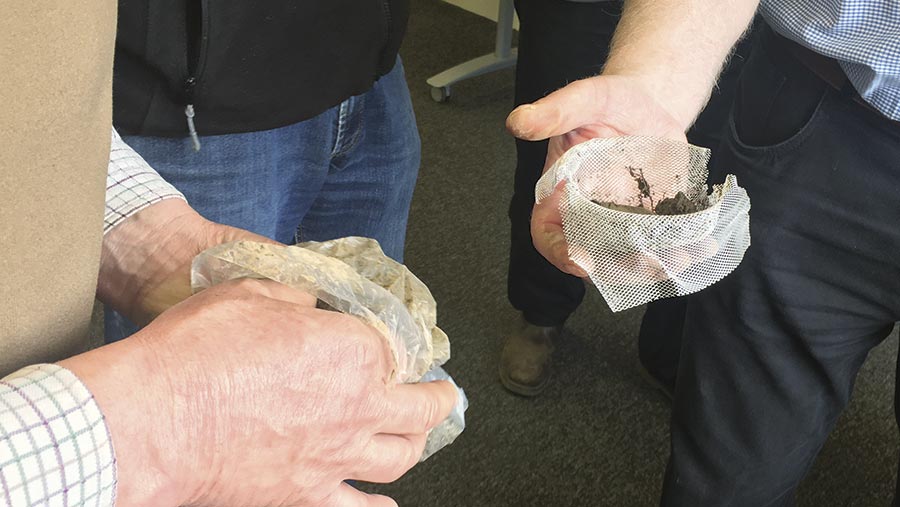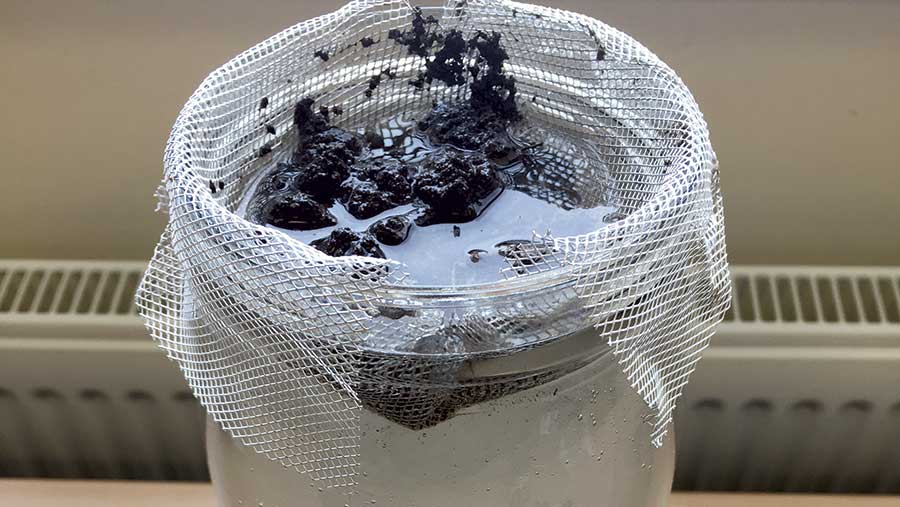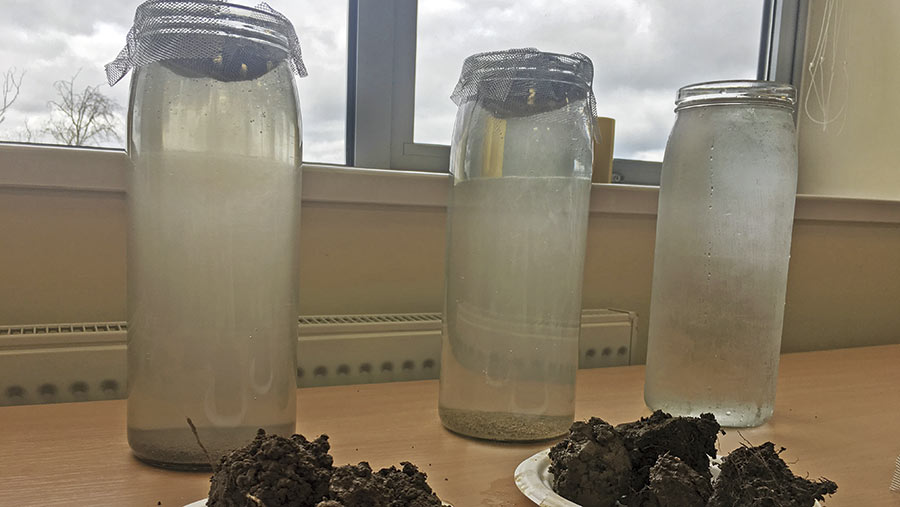How mob grazing can be used to improve soil health

Mob grazing could become more popular in future as the government ramps up pressure on farmers to rebuild soil.
This is the view of Stephen Briggs, soil and water manager at Innovation for Agriculture, who believes mob grazing – whereby fields are given more time to rest and are not grazed as hard – offers livestock farmers the opportunity to enhance soil health cheaply, without having to drastically alter their systems.
The extended nature of mob grazing allows grass leys more time to recover. This promotes leafy growth, builds root structure and improves overall soil health – at the same time as boosting grassland productivity.
See also: Canadian beef farmer improves soil by mob grazing
However, it does require intense management. So what do farmers need to know?
Tall growth
One of the main principles behind mob grazing is to let the plant grow much taller, with more biomass allowed to encourage root growth below ground.
If plants are quite small, then they will only have a small root, explains Mr Briggs.
“Without the biomass, the plant thinks it does not need to root anymore,” he says. “Taking off a cut of silage will cause the root to die back below ground.”
In contrast, mob grazing promotes taller grass plants and more extensive rooting systems.
The relationship between leaf area removed and roots |
|
|
% leaf area removed |
% root growth retardation |
|
10-40 |
0 |
|
50 |
2-4 |
|
60 |
50 |
|
70 |
78 |
|
80-90 |
100 |
How does mob grazing differ to rotational grazing?
Mob grazing is very similar to rotational grazing, but the key difference is that grassland is grazed with much higher sheep or cattle numbers for a shorter amount of time. Fields are then rested for longer periods before animals return to them.
“It throws traditional grassland grazing rules out of the window,” explains Mr Briggs.
How does it work in practice?
Stock might be moved on a daily or twice-daily basis, so the system is more intensive than rotational grazing in terms of management.
Stock should be turned into fields when grass is knee-high on cattle and taken out when it’s ankle high, advises Mr Briggs.
The golden rule is for stock to graze one third, trample one third and leave a third.
This places a lot more carbon into the upper layers of the soil to create a sponge of organic matter in the top layers quite quickly.
“We have seen that grass regrowth rates are much quicker than in a traditional (set-stocked) grassland system. The amount of inputs you then need – such as bagged fertiliser – is reduced quite rapidly over a two or three-year period.”
What plants should be grown?
A mix of grasses, legumes and herbs is recommended, but Mr Briggs suggests that farmers should plant what suits their individual system.
Types of forage plants suitable for mob grazing |
||
|
Grasses |
Legumes |
Herbs |
|
Festulolium |
Red clover |
Chicory |
|
Cocksfoot |
White clover |
Ribgrass |
|
Ryegrasses |
Alsike clover |
Burnet |
|
Timothy |
Bird’s foot trefoil |
Yarrow |
|
Meadow fescue |
Yellow trefoil |
Sheeps parsley |
|
Tall fescue |
Sainfoin |
|
|
Lucerne |
||
|
|
Sweet clover |
|
Management: Fencing and water planning
Other considerations with this kind of system include mobile fencing and mobile water troughs. “Static water systems just do not work.”
Instead, Mr Briggs says farmers need to think about how they will get a supply of water to each plot and how troughs will be moved.
Electric fencing is the most commonly used fencing, but as stock will require moving at least once a day, this will likely need careful planning.
Pros
- Low cost
- Even grazing
- Organic manure
- Weed control [MJ1]
- Deeper-rooting grasses improve soil structure and subsequent drought and flood tolerance
- Stock checked daily during movements
Cons
- Management and labour required to move stock daily
- Set up of fencing and water supply
- Not eligible for Higher Level Stewardship options
4 step guide to carrying out an easy soil test for organic matter
1. Collect a number of soil samples from across the same soil type and field.

2. Fill a clear glass jar with water. Using a sieve or mesh, hook this over the rim of the jar and place the soil in the top so that it is sat in the water.

3. Leave the soil for half an hour and the sample will be saturated. The condition of the soil and the water will roughly indicate the level of organic matter in the soil.
Cloudy water indicates the soil is not very stable, while healthy soil with the best glomalin – or glue – should remain clear. Typically, the darker the soil, the higher the carbon level. However, high levels of calcium carbonate can cloud the water.

4. For a further indication of soil health, leave the sample on a window overnight. If there is soil left in the mesh in the morning, this indicates good soil health. If there is no soil left in the mesh, then the soil is in poor health.
